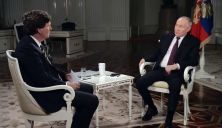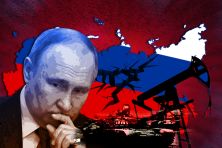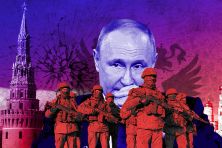Sweden plans to increase its defense budget by almost a third next year. The decision is due to the country’s intention to reach the level of military expenditures of 2% of the GDP — such a threshold is set in NATO, which the Scandinavian country aspires to become a member of. This was stated by the Swedish Minister of Defense Paul Junsson. The government official also added that the decision to increase the budget for military needs was due to the “difficult situation in the field of security”. And the Swedes are not the only ones building up their military power. Russia’s war against Ukraine influenced the militarization of countries around the world, FREEDOM reports.
Thus, after the start of the full-scale Russian military invasion of Ukraine, the total defense spending worldwide increased rapidly. In 2022, they amounted to a record 2.24 trillion dollars. The growth trend continues.
“Because everyone understands that the United Nations is in deep crisis. And this crisis, of course, causes a rather sharp, rather acute reaction in various countries. Countries do not feel stable, countries are afraid of local threats from, for example, nuclear states, totalitarian states,” says Oleksiy Buryachenko, candidate of political sciences, head of the International Association of Small Cities.
The most significant increase in the level of military expenditures is observed in Europe. This is dictated by the geographical location. And the closer the country is to the aggressor — Russia, the more funds it allocates for its own security. For example, the governments of Lithuania, Estonia and Latvia express their readiness to spend up to 3% of their GDP on defense in the coming years. Poland is on its way to an even higher declared figure of 5% of GDP. Thus, the Polish defense budget for 2024 increased by 15% — to an unprecedented 38 billion dollars for the country.
“Despite many crises, we managed to find income for this year. If you look at the picture of the whole budget, I would draw attention to three main pillars. The first is broadly understood physical security — the security of our borders and the financing of our army,” Polish Prime Minister Mateusz Morawiecki said at a government meeting.
At the same time, most European countries are approaching the mark of 2% of GDP on defense. And that’s a lot. NATO countries, for example, have been working towards such an indicator for almost 10 years — a corresponding agreement was reached back in 2014 after Russia occupied Crimea. The second round of Russian aggression hastened the members of the North Atlantic bloc, but now they are demanding even more from the members of the Alliance.
“2% is increasingly considered the minimum, not the maximum. We will agree on greater joint contributions to NATO for the benefit of our security,” NATO Secretary General Jens Stoltenberg said at a briefing.
The defense expenditures of the two hegemons of military budgets and at the same time strategic opponents — the United States and China — are increasing by leaps and bounds. So, the United States plans to allocate 880 billion dollars for military needs next year, which is 33 billion more than this year. China announced an increase in its defense budget by 7.2% to $210 billion. The costs of militarization are increasing worldwide.
“Everyone is trying to strengthen themselves by military means. Who can get stronger, they get stronger. This, I would say, is some new round of the global arms race. This is already such a race of everyone against everyone, and not just two poles, as it was before – the United States and the Soviet Union – the Cold War. Now everyone feels unsafe,” Buryachenko comments.
Updated defense budgets will be spent on the same needs as before, only in larger quantities. These include conducting military exercises, contracts for the production of equipment and ammunition, innovations in the field of security, ensuring the training of conscripts, forming a mobilization reserve, and ideological militaristic work. And the budgets of the countries of the pro-Ukrainian coalition also provide for military support for Kyiv in resisting Russian aggression. In addition, it is necessary to replenish own spent stocks.
“Until now, allies have been depleting reserves to be able to support Ukraine – this is an unsustainable path, so we need to increase production in order to fulfill these new and more ambitious tasks,” the NATO Secretary General emphasized at the briefing.
“Ammunition production is gaining momentum in the United States, Germany, and other countries. Germany resumed the construction line for the production of ammunition for the Gepard, which was also a bit of a problem for a while. Germany is increasing the production of IRIS-T systems,” said Yuriy Ignat, the spokesman of the Air Force Command of the Armed Forces of Ukraine.
Analysts note that Russia’s full-scale invasion of Ukraine, which has been going on for more than 18 months, demonstrates to the whole world the vulnerability of the international security system. According to experts’ forecasts, the military situation in Europe and beyond will remain unstable in the foreseeable future. Countries are building up their military power to be ready for any possible challenge, even the most acute.













